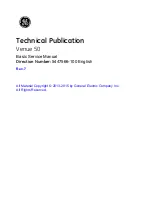
- -
15
C
ONDUCTIVITY MEASUREMENT
The instruments work with conductivity/temperature combined probes, 4-ring and 2-ring, only con-
ductivity probes, or temperature probes. The 4-wire Pt100, 2-wire Pt1000 probes may be used for
measuring temperature, which is used for the automatic compensation of the conductivity.
The instrument obtains the following from the measurement of conductivity:
•
the liquid resistivity measurement (
Ω
, k
Ω
, M
Ω
),
•
the concentration of total dissolved solids (TDS) according to the
χ
/TDS conversion factor,
which can be modified using the menu,
•
the salinity (NaCl quantity in the solution, expressed in g/l).
The conductivity, resistivity, TDS or salinity indication is displayed in the main line, while the sec-
ondary line shows the temperature.
The conductivity probes must be periodically calibrated. To facilitate this operation, four automatic
calibration solutions recognized by the instrument are provided:
•
0.001 Molar KCl solution (147
μ
S/cm @25°C),
•
0.01 Molar KCl solution (1413
μ
S/cm @25°C),
•
0.1 Molar KCl solution (12880
μ
S/cm @25°C),
•
1 Molar KCl solution (111800
μ
S/cm @25°C),
User calibration of the temperature sensors is not required.
The probes are detected during turn on, and this cannot be performed when the instrument is
already on, therefore if a probe is connected and the instrument is on, it must be turned off
and back on again
.
Standard probe
The standard 4-ring conductivity/temperature combined probe has code
SP06T
.
A bell made of Pocan delimits the cell measurement zone. A positioning key, present in the probe's
end part, orients the bell correctly when the probe is introduced. For cleaning, simply pull the bell
along the probe's axis without rotating it.
It is not possible to perform measurements without
this bell.
This probe's temperature measuring range is 0…+90°C.
4- ring or 2- ring probes
The HD2106.1 and HD2106.2 conductivity meters use 4-ring or 2-ring probes for conductivity
measurement.
The 4-ring probes are preferred to measure high conductivity solutions, either over an extended
range or in presence of pollutants. The 2-ring probes operate in a shorter measurement range but
with accuracy comparable with the 4-ring probes.
















































